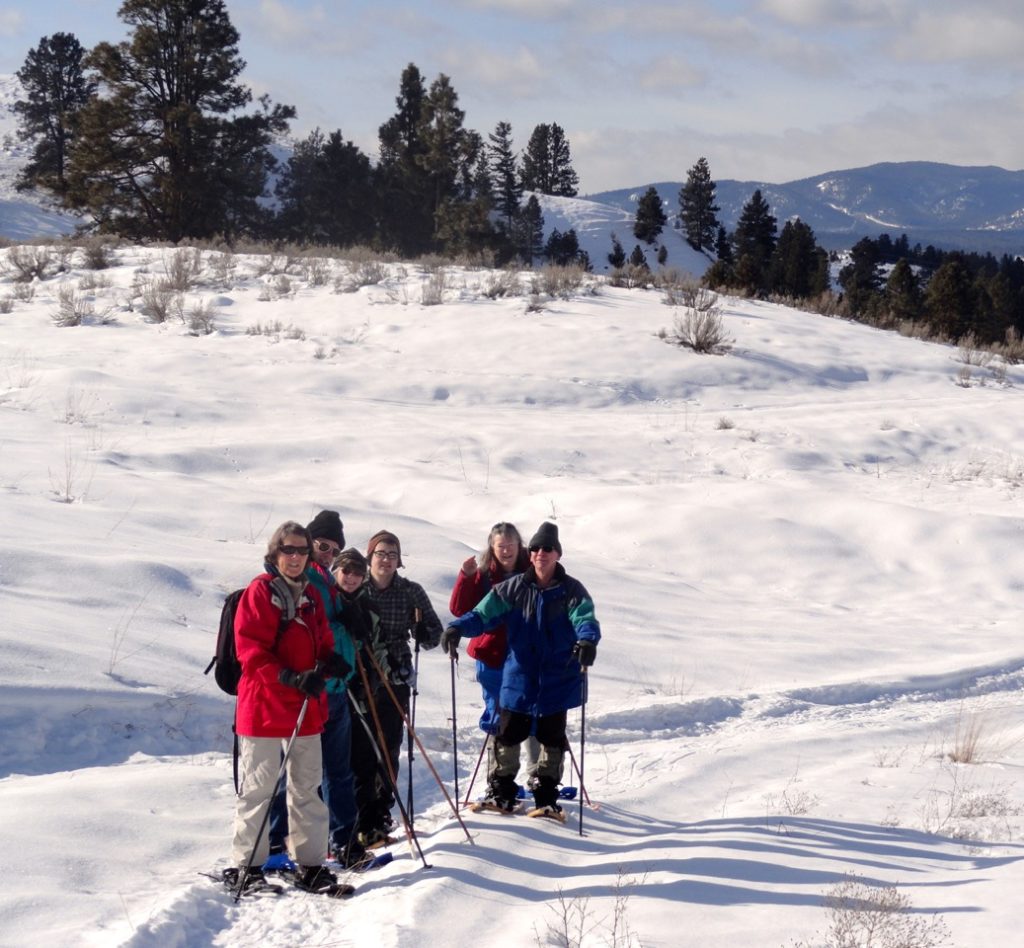
Seven people participated in this snowshoe hike. It was a fine day for a hike with plenty of sunshine and no wind. We left 2 vehicles on the road past the golf course and then drove back to the Princeton Cemetery, “the dead centre of town” (groans). With the help of an old cushion, even those of us who are vertically challenged, managed to cross the barbed wire fence while wearing snowshoes (this may become a winter Olympic Event). We skirted around the old tailings, marvelling at what the mining companies got away with in the past, then got on the old road. The rolling hills are covered with Big Sage (Artemisa tridentata) which gave off a perfume even on a winter day. Following the trail, we saw many tracks of squirrels, coyotes, snowshoe hares, deer, mice, grouse, and even tracks left by a cross country skier. Later in the day, almost at the end of the hike, we saw the parallel marks made by a cougar, eight feet off the ground on a ponderosa pine!
After an hour and a half we reached the lava beds. This area measures 200 metres wide and slopes downwards for half a kilometre. At this time of year the lava beds are covered in snow but some rocks are visible. This area is devoid of all vegetation, whilst the edges are covered in some trees and grasses. The reason for this phenomena is quite unclear. In the distant past Princeton was the site of much volcanic activity, and these lava flows are indicative of this. My question is, “Why isn’t this site covered in glacial deposits like everything else?
Along the way we enjoyed wonderful views, especially looking northward. We stopped for lunch on top of the old Amber Ski Jump and found the tower and bull wheel at the top of the old tow. After lunch we made our way down the steep trail toward the big ponderosa pines above the golf course and down the track of the other tow line. We arrived back at the cars at about 1:00 p.m after our 3 hour hike.

